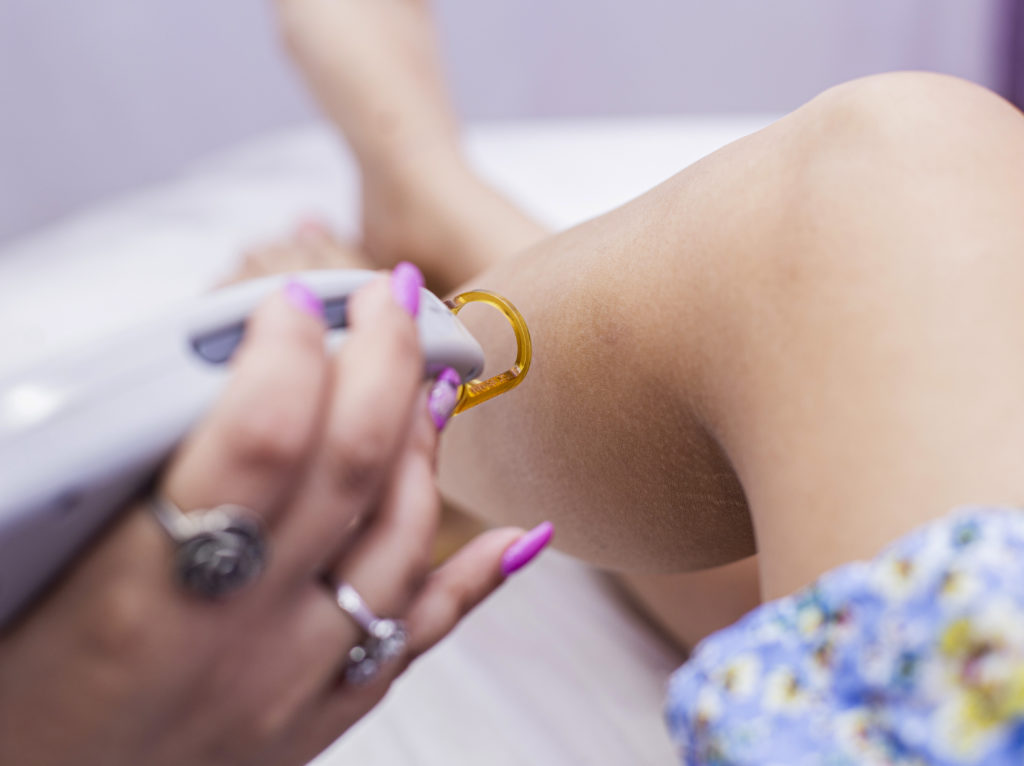Time to Breakdown Cosmetic Laser Procedures
Even though a lot of people consider cosmetic laser to be used for routine procedures, it is still a medical procedure. You should get informed about it and arm yourself with knowledge so that you can make all the right choices. Additionally, it is much less scary to undergo a procedure if you know more about it.
How Lasers Work
Lasers emit only one wavelength, which means that it is only one color of light. That is as general as it gets when explaining how lasers work. It is a one-wavelength, concentrated, directed beam of light that uses light frequency to create heat.
Focusing that amount of heat directly onto a specific spot means that you can use lasers to destroy, cauterize, and burn off certain unwanted conditions. It is essential that the spot you want to treat with a laser has a specific tone of color. Otherwise, the laser won’t be as effective. That’s why it is excellent for treating different brown spots, red capillaries, and hair removal.

Different Types of Lasers
Depending on how deep they go when treating skin, lasers can be ablative and nonablative. To treat the superficial layers of your skin, you need ablative laser treatment. They remove the top surface of the skin. Nonablative lasers are used for deeper tissues of the skin.
The best thing about them is that they don’t damage the top layers when they are used for the interventions on the deep tissue.
Classifying lasers into ablative and nonablative is just the beginning. You can find many sub-categories and brand names. Lasers differ mainly by the wavelength on which they operate. Depending on the skin condition, several types of lasers can be used to treat one disease.
Conditions Treated with Lasers
Not all things treated with lasers are a severe condition. Some of them are merely cosmetic touchups that are purely aesthetic. Here are some of the most common uses of lasers:
Hair removal: This is not always successful, as laser hair removal targets hair follicles and burns them. Therefore, it is most successful with people that have fair skin and dark hair. Lasers used are mainly IPL and Nd: YAG

Tattoo removal: Similar principle behind hair removal is also used for tattoo removal. The lasers usually utilized are CO2 and Nd: YAG.
Acne Scars: The first go-to type of laser for both acne and acne scars is CO2 laser. It is especially useful for deep scars. More superficial acne scars can even be treated with some nonablative lasers. The current acne responds well to LED lasers.
Warts and Skin Tags: One of the most efficient ways to get rid of the warts is by treating it with a CO2 laser. Another option is the pulsed dye lasers, as well as IPL and LED.
Facial Wrinkles: There are two phases for treating wrinkles with lasers. You have to do skin resurfacing and tightening, as well. Mainly CO2 lasers and Erbium YAG lasers are used for this.
Skin Pigmentation: There are many different reasons for your skin to develop spots and hyperpigmentation in any form. Age, sun exposure, or other processes are to blame. Your choice of treatment can be Nd: YAG or pulse dye. There are also IPL and fractional lasers that are used for these purposes.
Vascular Issues: These can be blood vessels, spider veins, birthmarks, and other lesions that are caused by blood vessel issues. The best choice for these problems is IPL.
When lasers were discovered, there were those who considered them to be ‘solutions seeking a problem.’ Today, we are lucky to live in the times when we have those same lasers to help us with anything from precancerous lesions to cosmetic interventions.
Also, you can visit us for skin consultation with our expert aestheticians and dermatologists and have a heartfelt discussion as they guide you through your decision to book cosmetic laser procedures like skin resurfacing at Skinn Bar’s Frisco, McAllen and Abilene locations in Texas.